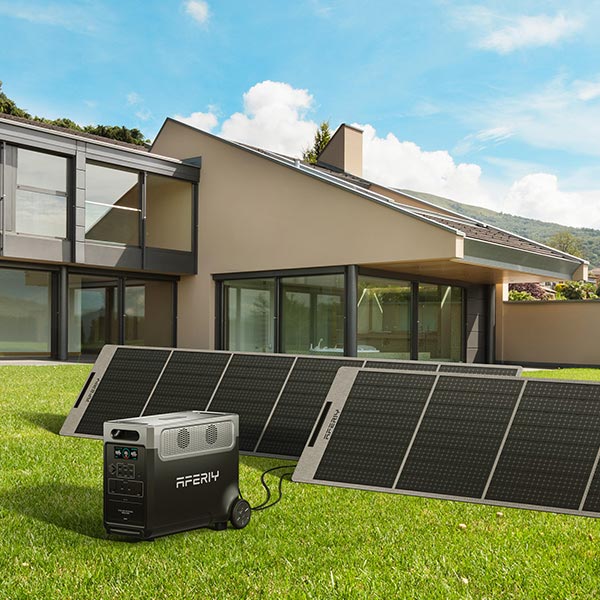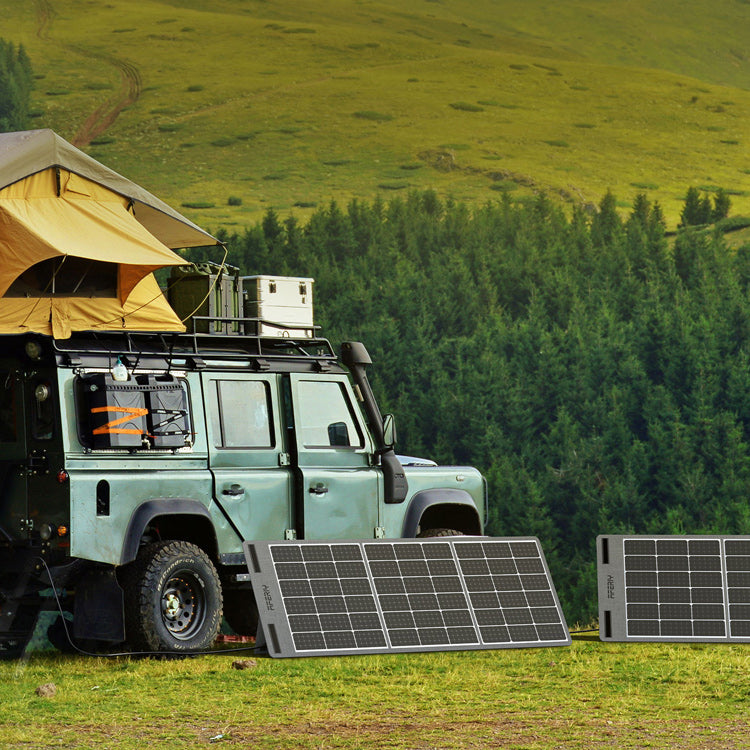Do Solar Panels Work At Night?
The shimmering promise of solar panels raises questions that echo across the twilight: Do solar panels work at night? This inquiry delves into the intricacies of solar panels, unveiling their capabilities, limitations, and the quest for continuous clean energy.
Understanding Solar Panels' Dependency on Sunlight

In the intricate realm of solar panels, photovoltaic cells stand as unsung heroes. These cells, often made from crystalline silicon, have an innate talent for transforming sunlight into electricity. When sunlight strikes these cells, it triggers a chain reaction – electrons gain energy, break free, and create an electric current. This current flows through an inverter, transforming it into the AC power that powers our devices.
However, as the sun dips below the horizon, these cells encounter a challenge. They require the sun's photons to set this cosmic choreography in motion. The absence of sunlight signals a suspension of activity – the electric current halts, the dance of electrons pauses, and solar panels become silent sentinels in the night.
The Absence of Sunlight and Solar Panel Output

Grappling with the misconception that solar panels work at night, it's vital to address the science underlying their function. Cloudy days might dim their brilliance, but the complete absence of sunlight extinguishes their power production.
The photovoltaic process is contingent upon photons’ exciting electrons. Darkness begets a quiet dormancy – the panels remain idle, devoid of the sun's energy that fuels their vitality.
Sunlight's significance extends beyond mere power generation; it orchestrates the symphony of electrons that powers our world. To envision solar panels as perpetually active, even in the absence of sunlight, is to misunderstand the essence of their operation.
Energy Storage Solutions for Nighttime Use

The quest for continuity during the night births an innovative solution: solar battery systems. These batteries act as reservoirs for excess energy generated during the day. Think of them as energy time capsules, capturing sunlight's abundance to be unlocked at night. They hold the promise of self-sufficiency, enabling households to draw on stored energy when solar panels are dormant.
Solar batteries, varying in capacity and capabilities, are central players in extending solar panels' influence into the night. Yet, they aren't omnipotent – their capacity determines the extent of energy available, and maintenance demands attention. While they provide an invaluable bridge between solar energy and nighttime needs, their effective utilization hinges on understanding their dynamics.
Alternative Sources of Electricity During the Night

As the sun sets and solar panels rest, a dynamic interplay unfolds. We turn to the grid, an infrastructure embedded in our daily lives. The grid, predominantly fueled by conventional sources like coal or natural gas, fills the void left by solar panels during the night. It highlights the symbiosis between renewable and non-renewable resources, emphasizing the holistic approach needed for sustainable energy consumption.
Amid this nightfall dependency, alternative sources illuminate a path forward. Wind turbines, harnessing nature's breath, offer a compelling supplement to solar power. Similarly, geothermal energy taps into the Earth's warmth, providing a consistent source of power. These alternatives, paired with solar energy, diversify our energy portfolio and push us toward a future less reliant on fossil fuels.
Future Possibilities: Innovations in Solar Panel Technology

The relentless march of progress casts a spotlight on the horizon of solar panel technology. Advancements in solar cells, exploring materials like perovskite, hold the potential to enhance efficiency and decrease dependency on direct sunlight. Concepts like bifacial solar panels, which capture light from both sides, hint at a more versatile future for solar energy.
Researchers are also exploring ways to capture and store residual energy, utilizing twilight moments for power production. While the notion of solar panels working entirely at night remains a distant dream, the strides taken in technology offer hope for reduced dependence on sunlight and a more efficient energy landscape.
Wrap Up

The quest for solar panels to function at night remains a mirage, yet their significance in the realm of clean energy is unwavering. As the sun dips below the horizon, these photovoltaic marvels retreat from the stage, allowing the stars to claim their moment. But in the journey of harnessing sunlight's power, understanding its limitations paves the way for a more sustainable future.
The dance of photovoltaic cells, orchestrated by the sun's photons, is a ballet of science and innovation. This intricate process aligns with the natural rhythm of day and night, underscoring the intimate relationship between solar panels and the sun. To envision them generating electricity without sunlight is to disregard the laws of physics that govern their operation.
Yet, the night's pause is not a void; it's an invitation to explore alternative avenues. Solar battery systems, standing as reservoirs of daylight's abundance, stretch the reach of solar energy beyond the sun's hours. They bridge the gap between day and night, offering a glimpse into a world where clean energy sustains us through the darkness.
The night sky is adorned with constellations of innovation, each representing a facet of our quest for a greener tomorrow. Advancements in solar technology promise a future where panels are not merely reliant on direct sunlight. As perovskite cells dazzle with their efficiency and bifacial panels capture light from unconventional angles, the realm of possibility expands.
In the grand narrative of energy consumption, the interplay of night and day, solar panels shine as luminous protagonists. Their role isn't confined to the cloak of darkness; it extends into the daytime, where they generate clean energy, power homes, and reduce our carbon footprint. Their silence at night echoes their brilliance during the day – a harmonious choreography of science and sustainability.
As we contemplate solar panels and their nighttime slumber, the journey of discovery continues. The stars above remind us that even in the darkest hours, the light of innovation guides us. While solar panels may not work at night, their influence shapes our sustainable aspirations. So, let's continue our voyage into renewable energy, propelled by knowledge, innovation, and the promise of a brighter future.











Leave a comment
Please note, comments need to be approved before they are published.